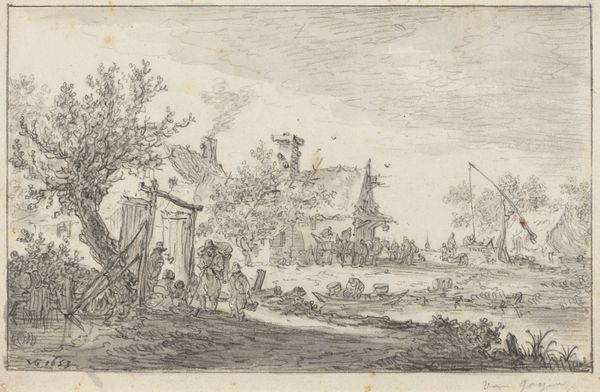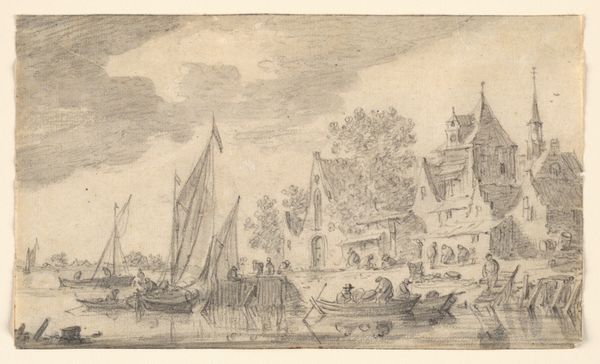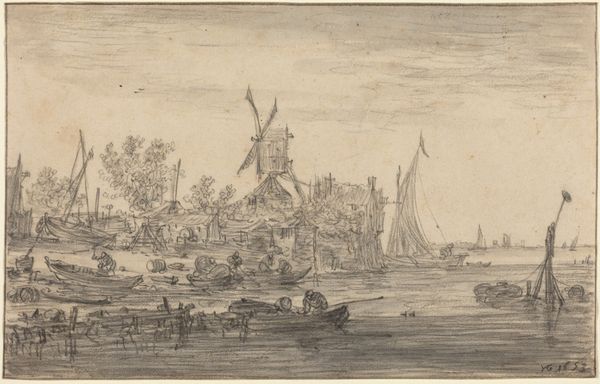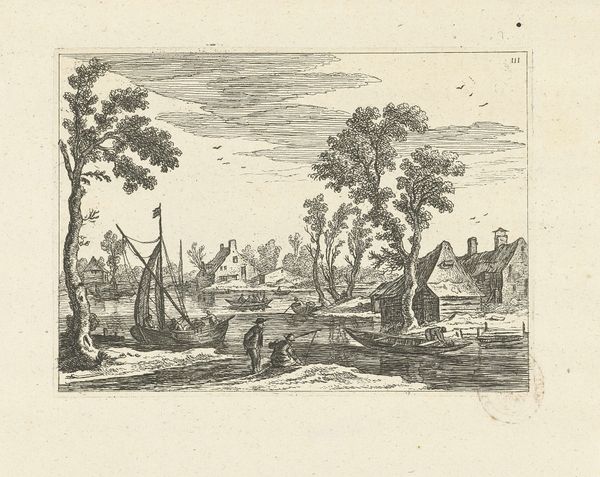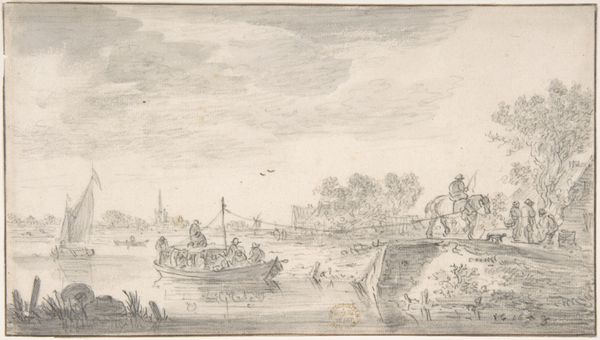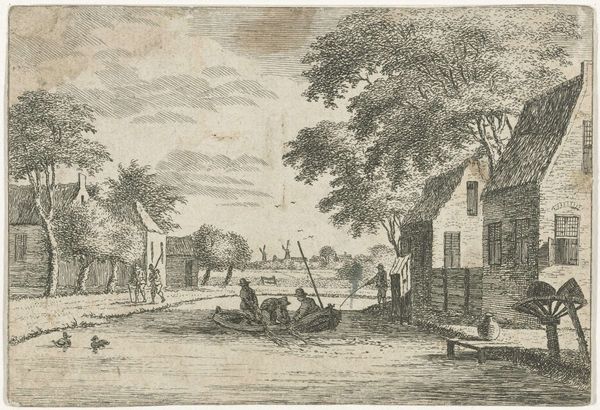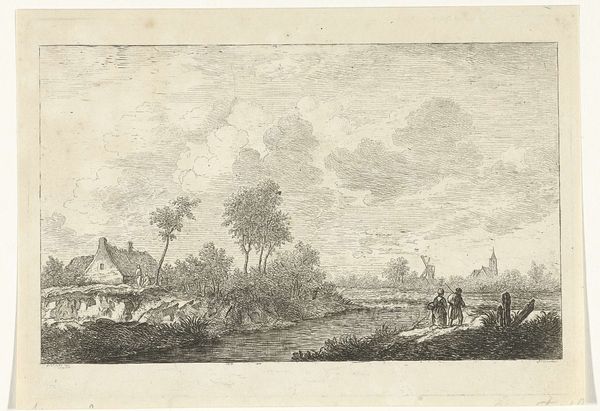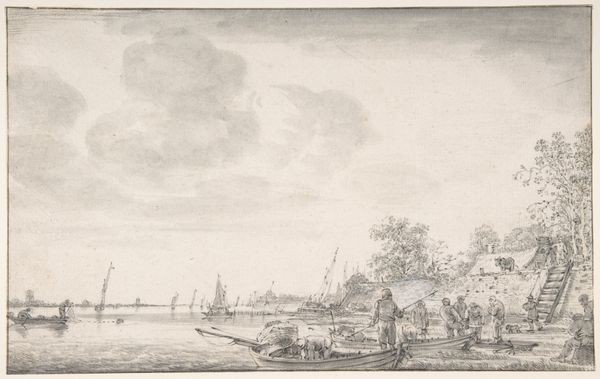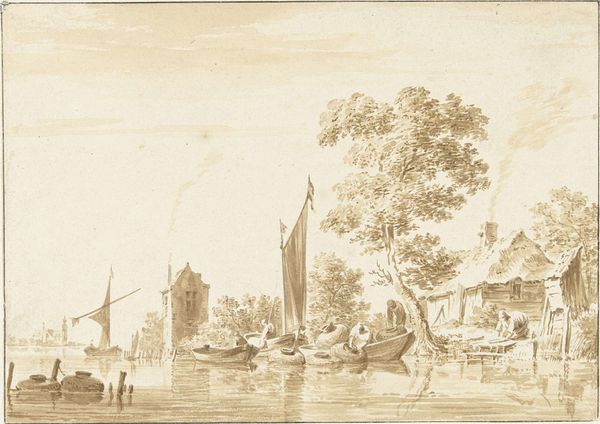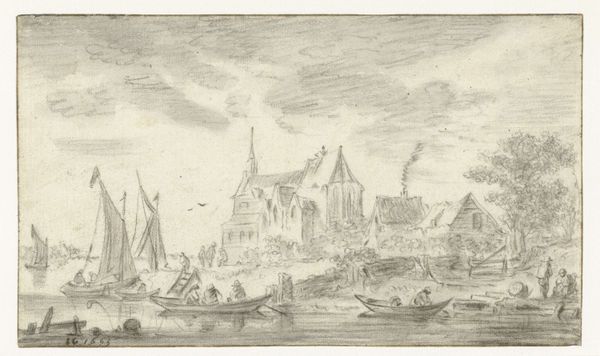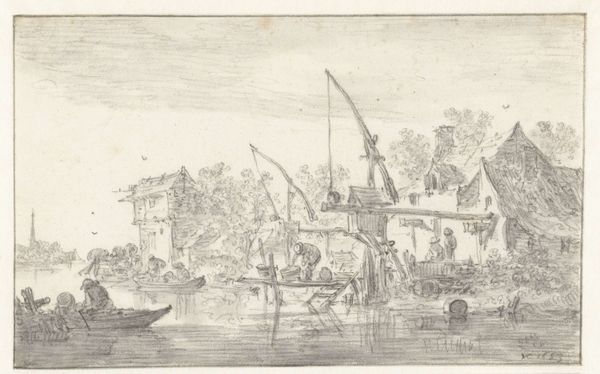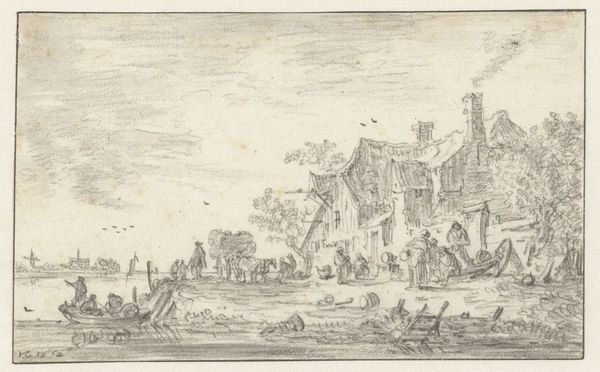
drawing, ink, pencil
#
drawing
#
baroque
#
dutch-golden-age
#
pen sketch
#
pencil sketch
#
landscape
#
figuration
#
ink
#
pen-ink sketch
#
pencil
#
pen work
#
sketchbook drawing
#
cityscape
#
genre-painting
#
realism
Dimensions: height 190 mm, width 274 mm
Copyright: Rijks Museum: Open Domain
Editor: So this is Thomas Heeremans' "Village on a River", made in 1679 using pen, ink, and pencil. It's such a detailed landscape; it really gives you a sense of bustling village life during that time. What do you see when you look at it? Curator: I'm drawn to how the work documents the modes of transportation and economic activity of the time. Notice the boats, crucial for moving people and goods, effectively the 'highways' of the Dutch Golden Age. What can you infer about the local economy from the sketch? Editor: Well, the people in the boats seem to be from different classes, which might show that the river facilitates commerce for everyone. Are there other details suggesting specific industries? Curator: Observe the architecture. The solid, well-maintained structures likely represent local businesses or homes of wealthier merchants. The smoke stacks imply the consumption of fuel, so logging, or some sort of heavy manufacturing, could also be vital for understanding the economy of the scene, and maybe the artist’s priorities in what he decided to depict in the sketch. Editor: So, it’s about reading the drawing as a historical record, almost like an economic snapshot in ink and pencil? Curator: Precisely. Consider also the division of labor represented, how some figures are idle, while others are clearly working. These choices reflect the social stratifications present and challenge conventional views of artistic 'skill' by connecting it to labor and representation. What do you make of it? Editor: That’s a really interesting way to look at it. I guess I hadn't considered the value of art as a record of manufacturing or production! Curator: Right! We are encouraged to rethink not only art historical values, but how deeply entwined material circumstances are to representation. Editor: I’ll definitely think more about the practical, everyday elements in art from now on. Thanks!
Comments
No comments
Be the first to comment and join the conversation on the ultimate creative platform.
